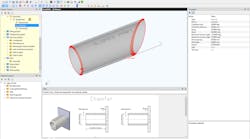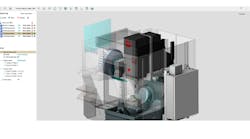Information Technology is a constantly evolving universe, with ideas and concepts emerging and maturing, and impacting the real world whenever a new decision has to be made about product design and manufacturing. CIMdata, a management consulting and research firm that specializes in Product Lifecycle Management (PLM) technology, is offering a complimentary research study about the use of Business Intelligence (BI) and Analytics in PLM.
As the source explained, “bringing differentiating, right-to-market products faster is critical to a company’s success as they strive to obtain a ‘first mover’ competitive advantage. To effectively leverage their product information, companies are using business intelligence and analytics solutions to provide users the right information, in context, for their needs.”
Obtaining a significant improvement in business performance requires the ability to collate, aggregate, and present information from multiple business systems (PLM, ERP, CRM, etc.), and quickly, so that users can make faster, more informed decisions. With so much information being created in these systems, new solutions are required to help users and management work more effectively.
Organizations use BI to assess the efficacy of a PLM system deployment across an enterprise, even (or perhaps, especially) complex global enterprises, as well as its New Product Development (NPD / NPI) processes. BI products gather, aggregate, analyze and disseminate information with historical, current and predictive views of the information to support the decision-making effort. It provides data and performance analytics to measure progress, benchmark the performance, and pinpoint prioritized areas of improvements via key performance metrics and digital dashboards. Importantly, according to CIMdata, BI is being used to drive processes based on changes in business and product information and process status.
A primary objective of BI is to support effective, timely, and actionable business decision-making. It incorporates measurement, analytics, reporting, collaboration, and knowledge management.
But to make a better decision, all the data must be turned into information that is accurate, timely, and actionable. It should be presented to users in a form that enables them to synthesize and analyze the vast amounts of data being created in multiple business systems. They need to be able to understand patterns and spot trends.
Additionally, to maximize the efficacy of the PLM initiatives, companies need comprehensive capabilities to track and monitor various aspects of PLM processes, managed information, and product programs. Often, companies do not understand what to focus on and how to get the most out of PLM. BI tools and techniques can be essential for creating structure from vast quantities of data, while analytics helps expose the most relevant information for the benefit of decision-makers. BI is essential for companies to realize the full potential of PLM.
CIMdata’s research study — “Smarter Decisions—Differentiating Products” — provides a perspective on the importance of BI and analytics within product development: the pressures that motivate its use; BI’s role; its value and future; and the example of one company that is developing and delivering advanced, rapid BI solutions for the PLM market. The report can be downloaded, free of charge.





